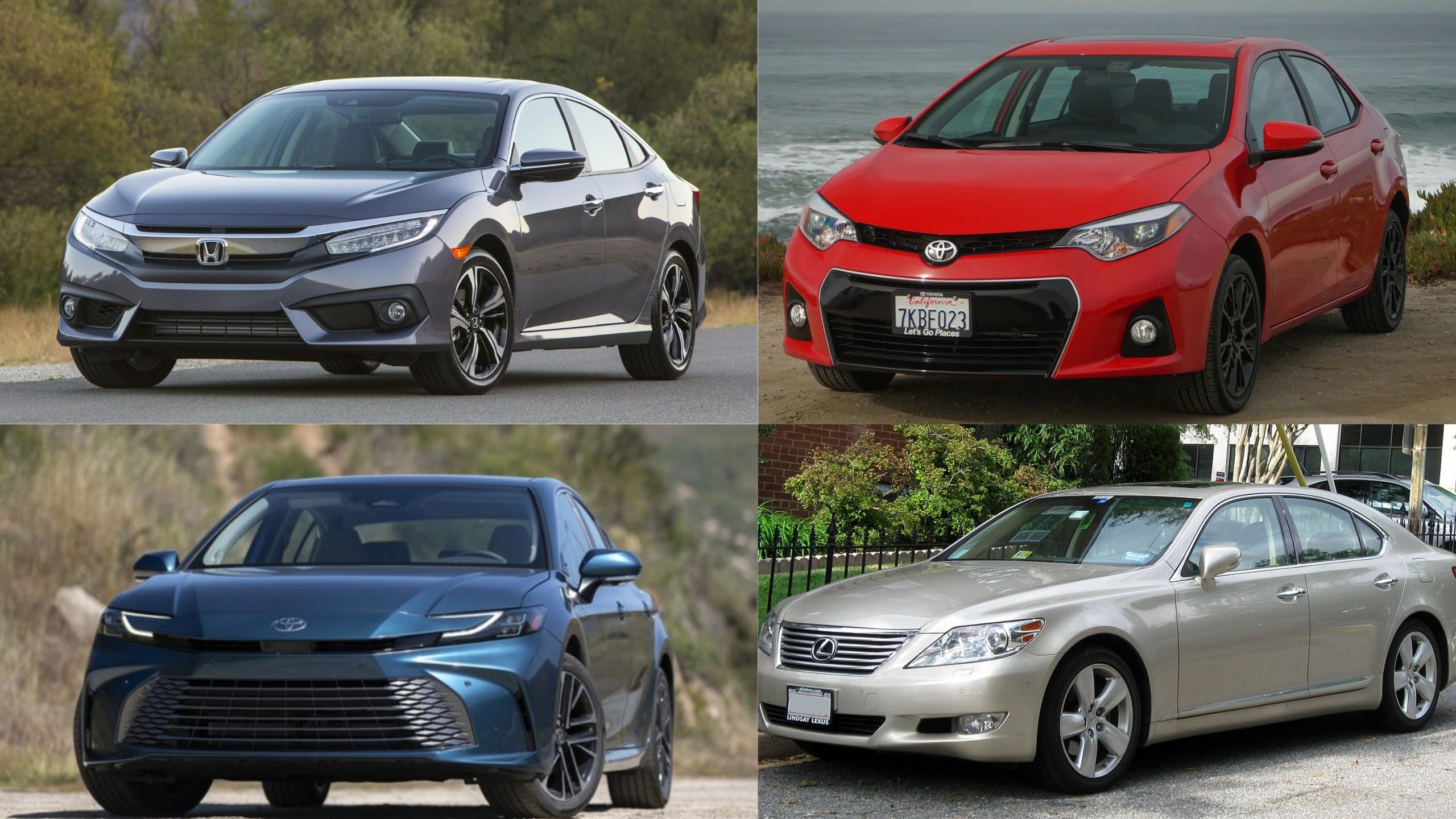Japanese automakers have built an extraordinary reputation for creating vehicles that stand the test of time. While American and German manufacturers often focus on performance, luxury features, or cutting-edge technology, Japanese car companies have consistently prioritized reliability and longevity as cornerstone principles.
This engineering philosophy is evident in their manufacturing processes, which emphasize quality control, component durability, and simplified mechanical designs that reduce potential failure points.
The result is a lineup of vehicles that regularly surpass the 200,000-mile mark while requiring minimal major repairs a milestone that many European and American counterparts struggle to reach without significant investment.
The following ten Japanese vehicles represent the pinnacle of automotive durability, consistently outlasting their international rivals through multiple decades of production.
These models have become legends in reliability circles, with countless examples still operating efficiently well past mileage figures that would have sent many American and German alternatives to the scrapyard.
Their extraordinary longevity isn’t just anecdotal it’s backed by decades of consumer reports, mechanic testimonials, and resale values that remain strong even as odometers climb into six-figure territory.
1. Toyota Corolla
The Toyota Corolla stands as perhaps the definitive example of Japanese automotive reliability, having earned its reputation through twelve generations of consistent dependability since its introduction in 1966.
What makes the Corolla particularly remarkable is its ability to withstand both time and neglect many examples routinely exceed 300,000 miles with only basic maintenance, a milestone that few American compact cars like the Ford Focus or Chevrolet Cruze can claim without significant powertrain rebuilds.
At the heart of the Corolla’s legendary reliability is Toyota’s commitment to evolutionary rather than revolutionary engineering. Unlike German competitors that often introduce complex new technologies with each generation, Toyota has refined the Corolla’s components over decades, perfecting each system before implementing changes.
The 1ZZ-FE and 2ZZ-GE engines found in models from the late 1990s through mid-2000s are particularly renowned for their bulletproof construction, featuring timing chains instead of belts and robust cooling systems that prevent the head gasket failures common in European counterparts.

This conservative engineering approach extends to the Corolla’s transmission options as well. While Volkswagen’s DSG transmissions in the Golf and Jetta frequently require expensive repairs by 100,000 miles, the Corolla’s conventional automatic transmissions regularly function properly past 200,000 miles with simple fluid changes.
The manual transmission versions are even more durable, with clutch assemblies often lasting the lifetime of the vehicle a stark contrast to many American and German rivals that require replacement at half the mileage.
The Corolla’s simplicity also plays a crucial role in its longevity. By avoiding overly complex electrical systems and computerized components that plague German rivals like the Audi A3, Toyota created a car with fewer potential failure points
When repairs are needed, parts availability remains exceptional due to the model’s global production numbers, and repair costs are typically a fraction of what German counterparts demand.
This combination of mechanical durability, parts accessibility, and service affordability has established the Corolla as the benchmark for long-lasting, low-maintenance transportation that consistently outlives its international competitors.
2. Honda Civic
The Honda Civic represents the perfect marriage of engineering simplicity and mechanical robustness that has allowed it to consistently outlast its American and German counterparts.
Since its debut in 1972, the Civic has evolved through ten generations while maintaining an unshakeable reputation for longevity that leaves competitors like the Volkswagen Golf and Ford Focus struggling to match its impressive service life.
The statistics speak volumes while the average Volkswagen requires significant repairs by 120,000 miles, countless Civics continue running strong past 250,000 miles with minimal major interventions.
Honda’s commitment to building exceptionally durable engines forms the cornerstone of the Civic’s longevity. The B-series, D-series, and K-series engines that have powered generations of Civics are engineered with precision tolerances and high-quality materials that resist wear.
These powerplants feature forged internal components, robust cooling systems, and exceptional oil circulation that dramatically reduces internal friction and heat-related failures.
By comparison, engines in American competitors often employ cast components that degrade more quickly and cooling systems more prone to failure.
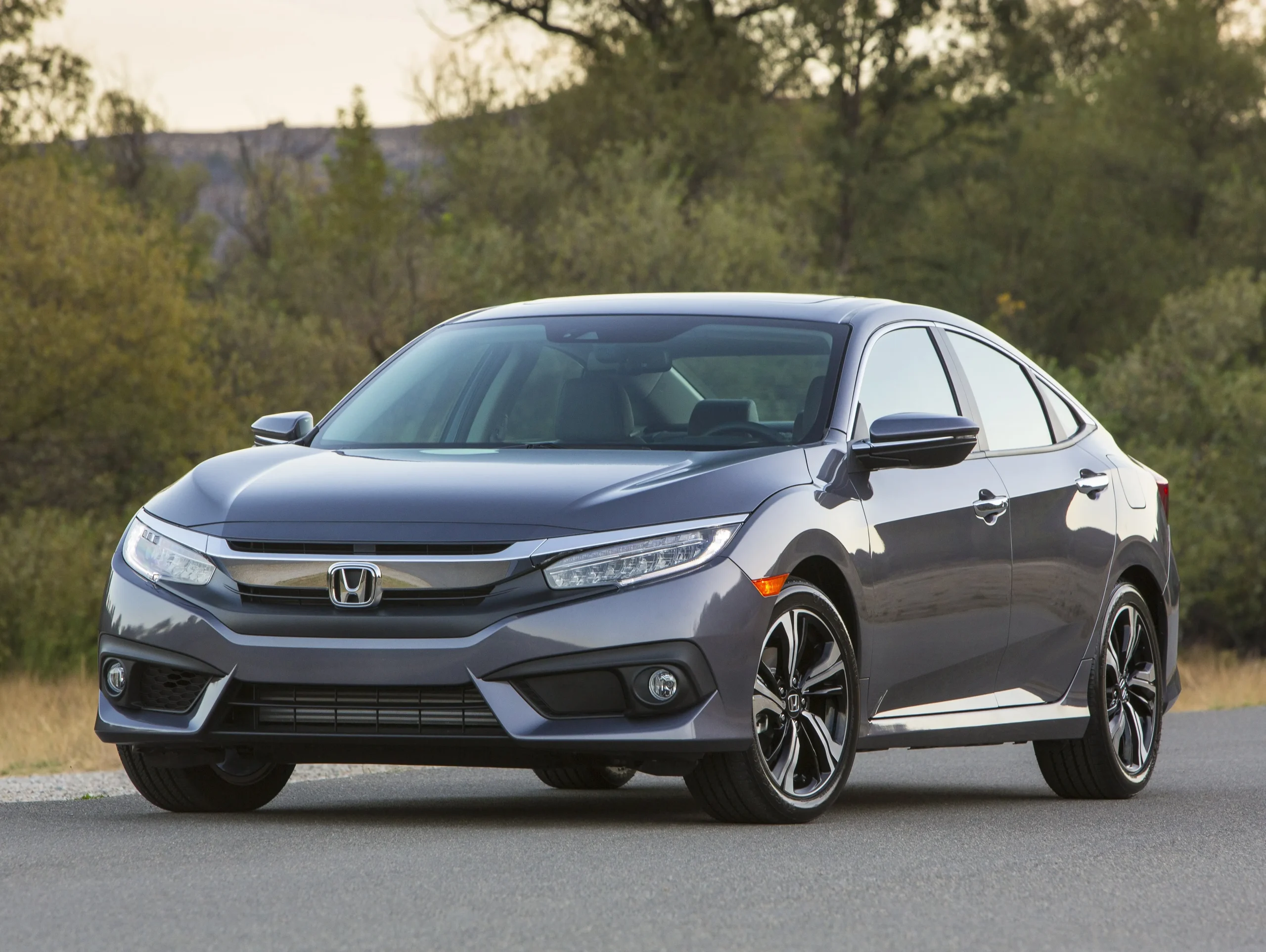
Even more impressive is the Civic’s resistance to oil consumption issues that plague many German engines as they age, allowing Honda owners to experience minimal degradation in performance even as mileage accumulates.
The transmission systems in Civics deserve equal praise for their exceptional durability. While Ford’s PowerShift dual-clutch transmissions became notorious for premature failure, and VW’s DSG gearboxes often require expensive maintenance by 100,000 miles, Honda’s manual and automatic transmissions routinely function flawlessly for 200,000+ miles with basic fluid maintenance.
The manual transmissions, in particular, feature shift linkages and synchromesh systems that maintain crisp operation well past the point where counterparts from other manufacturers become noticeably worn.
Perhaps most impressive is the Civic’s electrical system reliability. While German vehicles from Audi, BMW, and Mercedes-Benz often develop complex electrical gremlins as they age, the Civic’s straightforward and thoughtfully engineered electrical systems generally remain trouble-free throughout the vehicle’s extended lifespan.
This reliability extends to peripheral components like power windows, climate control systems, and dashboard electronics that continue functioning properly long after those in American and German rivals have failed, cementing the Civic’s reputation as a vehicle that truly stands the test of time.
3. Toyota Camry
The Toyota Camry has established itself as the gold standard for mid-size sedan longevity, consistently outlasting American competitors like the Ford Fusion and Chevrolet Malibu, as well as German rivals such as the Volkswagen Passat and Audi A4.
First introduced in 1982, the Camry has evolved through multiple generations while maintaining its core commitment to reliability a dedication that has resulted in countless examples surpassing 300,000 miles with their original powertrains intact, a threshold that American and German alternatives rarely reach without significant rebuilds.
The heart of the Camry’s exceptional durability lies in Toyota’s legendary engine design philosophy. The 2.4L and 2.5L four-cylinder engines, as well as the 3.0L and 3.5L V6 options, feature overbuilt components designed to withstand decades of operation.
These engines employ timing chains rather than belts (eliminating a common maintenance headache), precision-machined cylinder blocks with minimal manufacturing tolerances, and robust cooling systems that prevent the premature head gasket failures common in American competitors.
Even more impressive is Toyota’s insistence on rigorous testing each engine design undergoes thousands of hours of continuous operation testing before production approval, ensuring inherent reliability that German rivals like BMW’s N20 engine (prone to timing chain issues) simply can’t match.
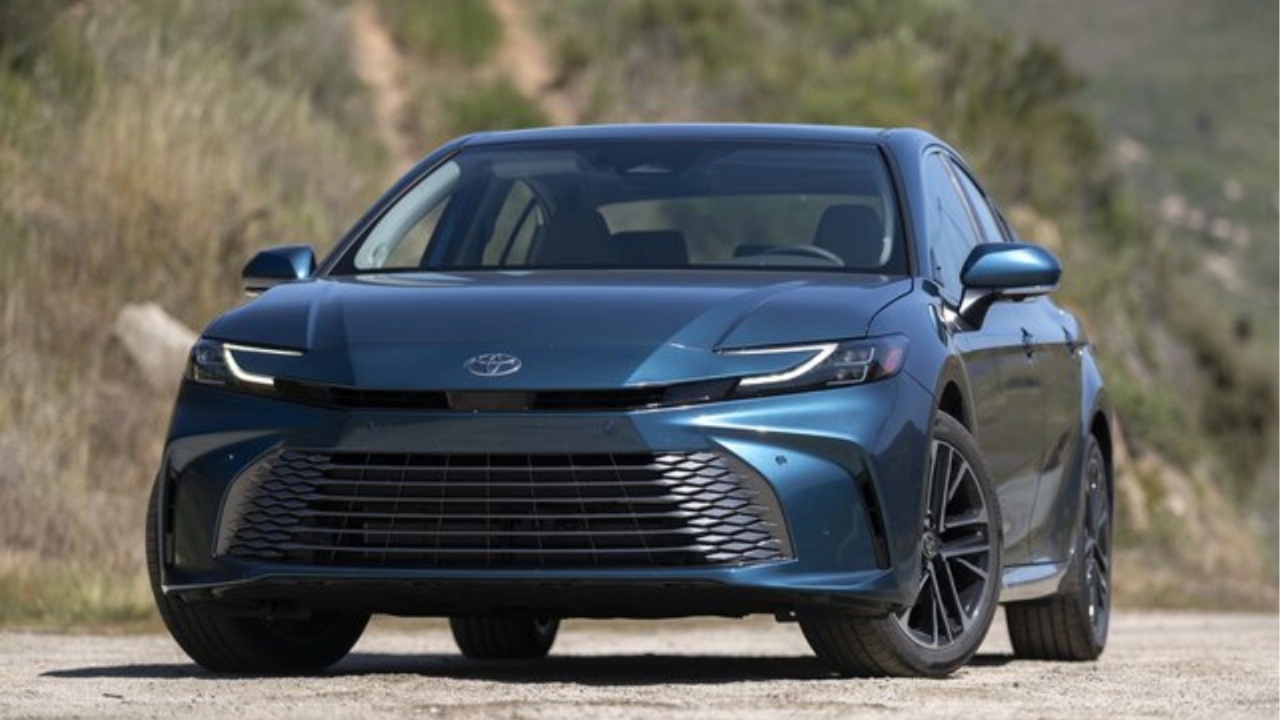
The Camry’s transmission systems demonstrate similar longevity advantages. While Ford’s CD4E and GM’s 6T70 transmissions frequently develop shifting problems by 100,000 miles, Toyota’s A760E/F and U760E automatics routinely function properly beyond 200,000 miles with basic maintenance.
This reliability stems from Toyota’s conservative engineering approach the company typically introduces new transmission designs years after competitors, but only after extensive testing ensures their durability.
The torque converter lockup mechanisms, valve bodies, and electronic solenoids demonstrate remarkable longevity compared to German equivalents like Mercedes-Benz’s 722.9 seven-speed, which often requires expensive repairs by 125,000 miles.
Beyond the powertrain, the Camry’s electrical system reliability further distinguishes it from less durable rivals. While Volkswagen and Audi’s products become increasingly prone to electrical gremlins as they age, the Camry’s straightforward electrical architecture and high-quality connectors maintain reliable operation well past 200,000 miles.
Interior components also demonstrate superior longevity seat frames resist breakage, dashboard materials avoid cracking, and control switches maintain consistent operation decades after similar components in American and German competitors have failed.
This comprehensive approach to durability explains why Camrys routinely remain on the road long after their international competitors have been consigned to the scrapyard.
4. Lexus LS
The Lexus LS series stands as the definitive example of Japanese luxury engineering outlasting its German counterparts. Since its revolutionary introduction in 1989, the LS has consistently demonstrated that premium vehicles need not sacrifice reliability for luxury.
While the Mercedes-Benz S-Class and BMW 7 Series often require expensive major repairs by 100,000 miles, the Lexus LS routinely surpasses 300,000 miles with minimal issues all while maintaining its refined driving experience and comfort.
At the core of the LS’s extraordinary longevity is its meticulously engineered powertrain. The 1UZ-FE V8 engine that powered early models is widely regarded as one of the most reliable engines ever produced, with many examples exceeding 400,000 miles without internal repairs.
This aluminum block masterpiece featured six-bolt main bearings, belt-driven camshafts with non-interference design (preventing catastrophic valve damage if timing belts failed), and exceptional cooling capacity that prevented the head gasket issues common in German luxury cars.
Later V8s like the 3UZ-FE and 2UR-FSE continued this tradition, addressing potential issues before they reached production. By contrast, engines in the BMW 750i and Mercedes S550 frequently develop costly problems with timing components, valve seals, and electronic systems long before reaching high mileage.
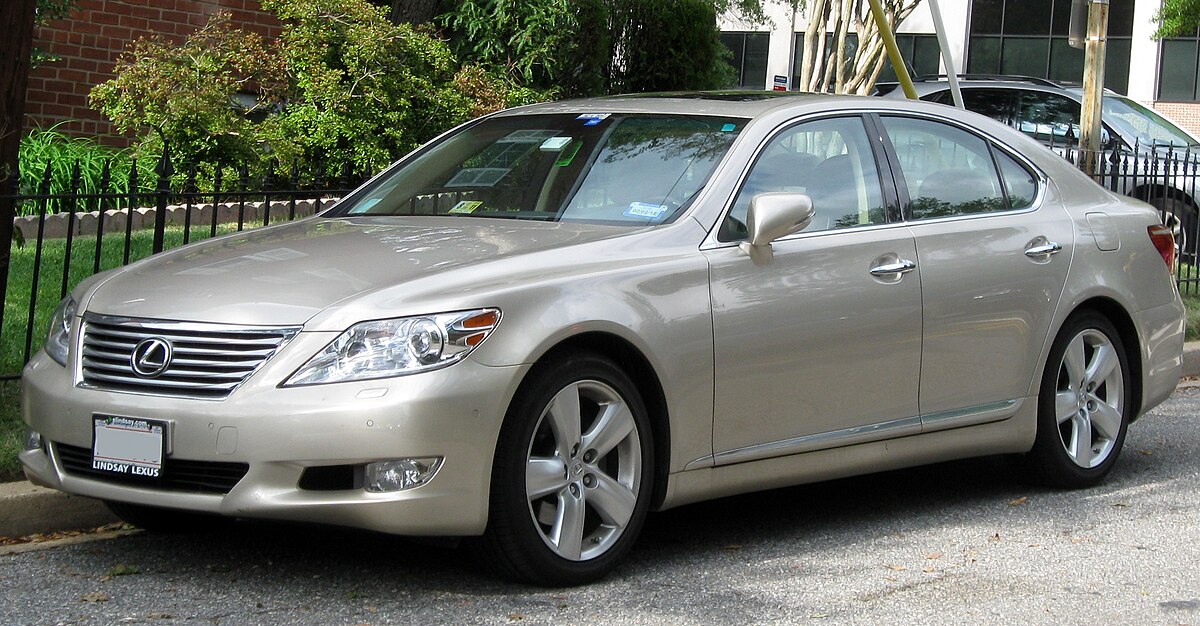
The transmission systems in the LS further highlight its durability advantage over German rivals. While ZF transmissions in BMW and Mercedes products often require rebuilds by 150,000 miles, the Aisin-Warner automatic transmissions in the LS series regularly function flawlessly beyond 250,000 miles with basic fluid maintenance.
Toyota’s conservative engineering approach of thoroughly testing components before implementation rather than rushing cutting-edge technology to market results in transmissions that avoid the electronic shift module failures and hydraulic control issues that plague German competitors as they age.
Perhaps most impressive is the LS’s ability to maintain its luxury features and comfort over extraordinary distances. While air suspension systems in the Mercedes S-Class typically fail multiple times during the vehicle’s lifespan, Lexus engineered their air suspension components with significantly longer service intervals.
The leather interiors resist wear and cracking far better than those in Audi A8 models of comparable age, and dashboard electronics continue functioning properly long after German rivals develop intermittent failures.
This comprehensive approach to engineering durability alongside luxury explains why high-mileage LS models remain sought-after in the used market, while equivalently-aged German flagships often sell for a fraction of their original value due to concerns about ongoing reliability and repair costs.
Also Read: 10 Vehicles for People Who Hate Going to the Mechanic
5. Honda Accord
The Honda Accord represents one of automotive history’s most compelling examples of engineering longevity, consistently outlasting American rivals like the Ford Taurus and Chevrolet Malibu, as well as German competitors like the Volkswagen Passat and Audi A4.
First introduced in 1976, the Accord has evolved through ten generations while maintaining its reputation for extraordinary durability with countless examples exceeding 300,000 miles on their original powertrains, a milestone that few of its competitors can claim without major mechanical rebuilds.
The foundation of the Accord’s exceptional lifespan begins with its engines. Honda’s F-series and J-series V6 engines, along with the K-series four-cylinders, are masterclasses in metallurgical precision and mechanical engineering.
These powerplants feature forged crankshafts, robust connecting rods, and precision-honed cylinder walls that maintain proper compression and oil control well beyond 200,000 miles the point at which many American and German engines begin experiencing significant compression loss and oil consumption.
Honda’s VTEC variable valve timing system has proven remarkably durable compared to similar technologies from competitors. While BMW’s VANOS and Mercedes’ variable valve systems often require expensive repairs by 120,000 miles, Honda’s VTEC mechanisms typically function flawlessly for the life of the engine.
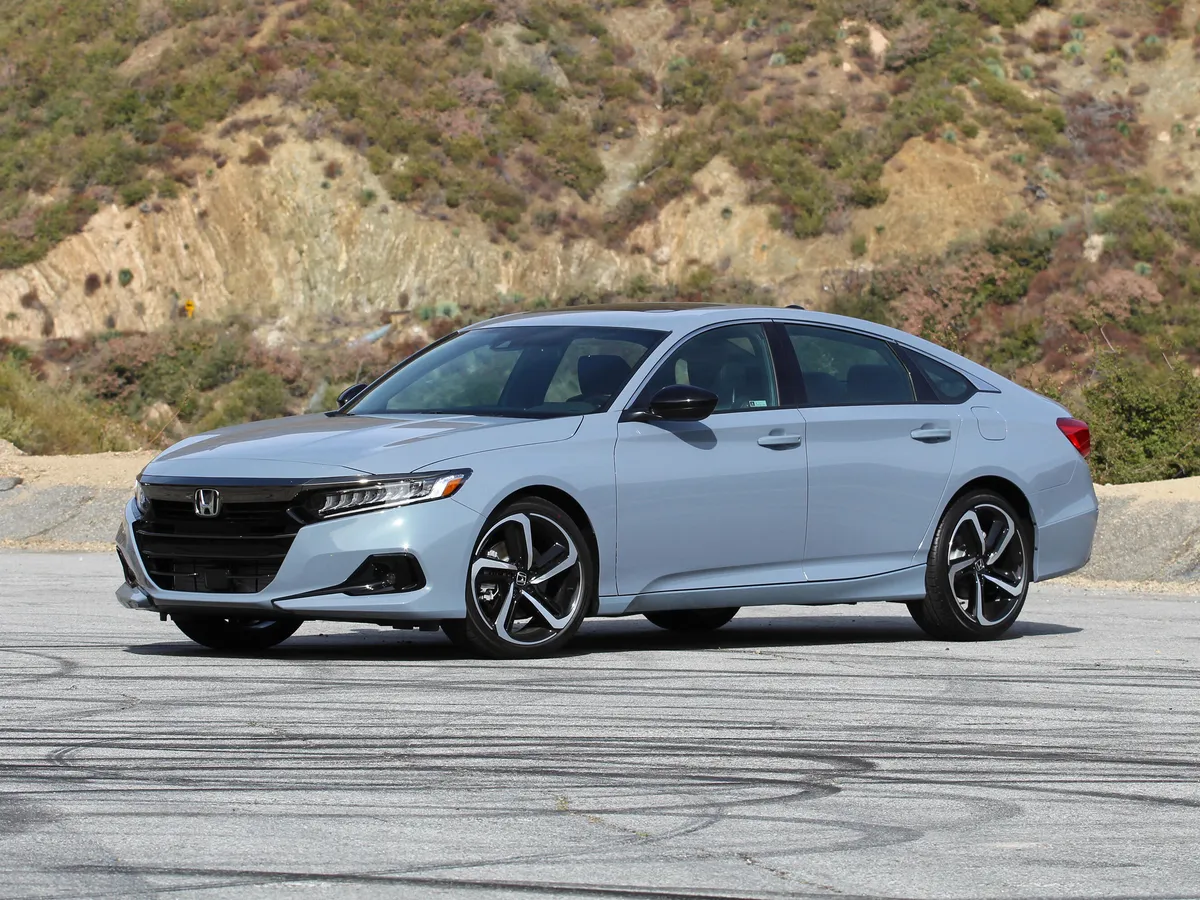
The transmission systems in the Accord further demonstrate Honda’s commitment to longevity. While Ford’s CD4E and GM’s 4T65E transmissions developed reputations for premature failure, Honda’s automatic transmissions (particularly after addressing issues in specific late-1990s models) regularly exceed 200,000 miles without major rebuilds.
The manual transmissions are even more impressive, featuring shift mechanisms and synchromesh systems that maintain smooth operation well past the point where German equivalents become notchy and imprecise.
This transmission durability stems from Honda’s conservative engineering approach using proven technologies while making incremental improvements rather than implementing radical redesigns that introduce potential failure points.
Beyond the powertrain, the Accord’s electrical system reliability further distinguishes it from less durable competitors. While Volkswagen products become increasingly prone to electrical gremlins as they age, the Accord’s straightforward electrical architecture and high-quality connectors maintain reliable operation decade after decade.
Interior components also demonstrate superior longevity seat frames resist fatigue cracks, dashboard materials avoid sun damage, and control switches maintain consistent tactile feedback well past the point where similar components in American and German alternatives have deteriorated.
This comprehensive approach to durability explains why Accords routinely remain on the road for 20+ years while competitors of similar vintage have long since disappeared from daily use.
6. Toyota Land Cruiser
The Toyota Land Cruiser stands as perhaps the most formidable example of Japanese automotive engineering outlasting its American and European counterparts. While the Land Rover Range Rover and Jeep Grand Cherokee often require major repairs by 100,000 miles, Land Cruisers routinely exceed 300,000 miles with their original powertrains intact.
More impressively, it’s not uncommon to find examples with 500,000+ miles still functioning as reliable daily drivers a testament to Toyota’s uncompromising approach to building vehicles designed for extreme durability.
At the heart of the Land Cruiser’s legendary longevity is its exceptionally overbuilt powertrain. The inline-six engines of earlier generations and the V8 powerplants of newer models feature substantially thicker cylinder walls, more robust bearing surfaces, and more effective cooling systems than those found in competitive luxury SUVs.
The 1FZ-FE straight-six engine that powered the 80-series Land Cruiser is widely regarded as virtually indestructible, with many examples running smoothly past 400,000 miles without internal repairs.
Similarly, the 2UZ-FE V8 used in later models employs cast iron cylinder liners within its aluminum block a design choice that sacrifices some weight savings for dramatic longevity gains compared to the all-aluminum engines used in Range Rovers that frequently develop cylinder wall scoring and compression issues by 150,000 miles.

The Land Cruiser’s transmission and transfer case systems further demonstrate Toyota’s commitment to building components that outlast the competition. While the ZF transmissions used in Land Rovers typically require rebuilds by 150,000 miles, the Aisin-Warner automatic transmissions in Land Cruisers regularly function properly beyond 250,000 miles with basic maintenance.
The transfer cases are particularly noteworthy for their durability featuring thicker cases, larger bearings, and more robust gear sets than those found in American competitors like the Cadillac Escalade and Lincoln Navigator, which often develop expensive drivetrain issues as mileage accumulates.
Perhaps most impressive is the Land Cruiser’s ability to maintain its structural integrity and secondary systems over extraordinary distances. While Mercedes-Benz GL-Class SUVs frequently develop suspension air leaks, electronic module failures, and interior degradation as they age, Land Cruisers maintain their functionality with remarkable consistency.
The hydraulic and electrical systems demonstrate exceptional reliability compared to German counterparts, with power window motors, climate control systems, and electronic modules continuing to function properly decade after decade.
This comprehensive approach to engineering longevity explains why Land Cruisers command extraordinary resale values even with high mileage buyers recognize that these vehicles will continue providing reliable service long after competing luxury SUVs have become financial liabilities requiring constant repair.
7. Subaru Outback
The Subaru Outback has earned an exceptional reputation for longevity that consistently surpasses its American and German crossover competitors.
While vehicles like the Ford Edge and Volkswagen Tiguan often begin experiencing significant issues by 150,000 miles, countless Outbacks continue providing reliable transportation well beyond 250,000 miles, particularly in harsh climates and challenging terrain where its competitors’ weaknesses become most apparent.
This remarkable durability stems from Subaru’s distinctive engineering philosophy that prioritizes simplicity, serviceability, and robust construction over the latest technological trends.
At the core of the Outback’s impressive lifespan is its horizontally opposed “boxer” engine design. While non-traditional compared to the inline and V-configuration engines used by most manufacturers, this layout offers several inherent durability advantages.
The boxer’s lower center of gravity reduces vibration and stress on engine mounts and supporting components, while its naturally balanced design minimizes internal harmonics that contribute to component fatigue.
Though early models experienced head gasket issues (largely resolved in later generations), these engines demonstrate exceptional longevity in their bottom end components. The connecting rods, bearings, and crankshafts maintain their integrity well past the point where many German turbocharged engines develop internal wear requiring rebuilds.
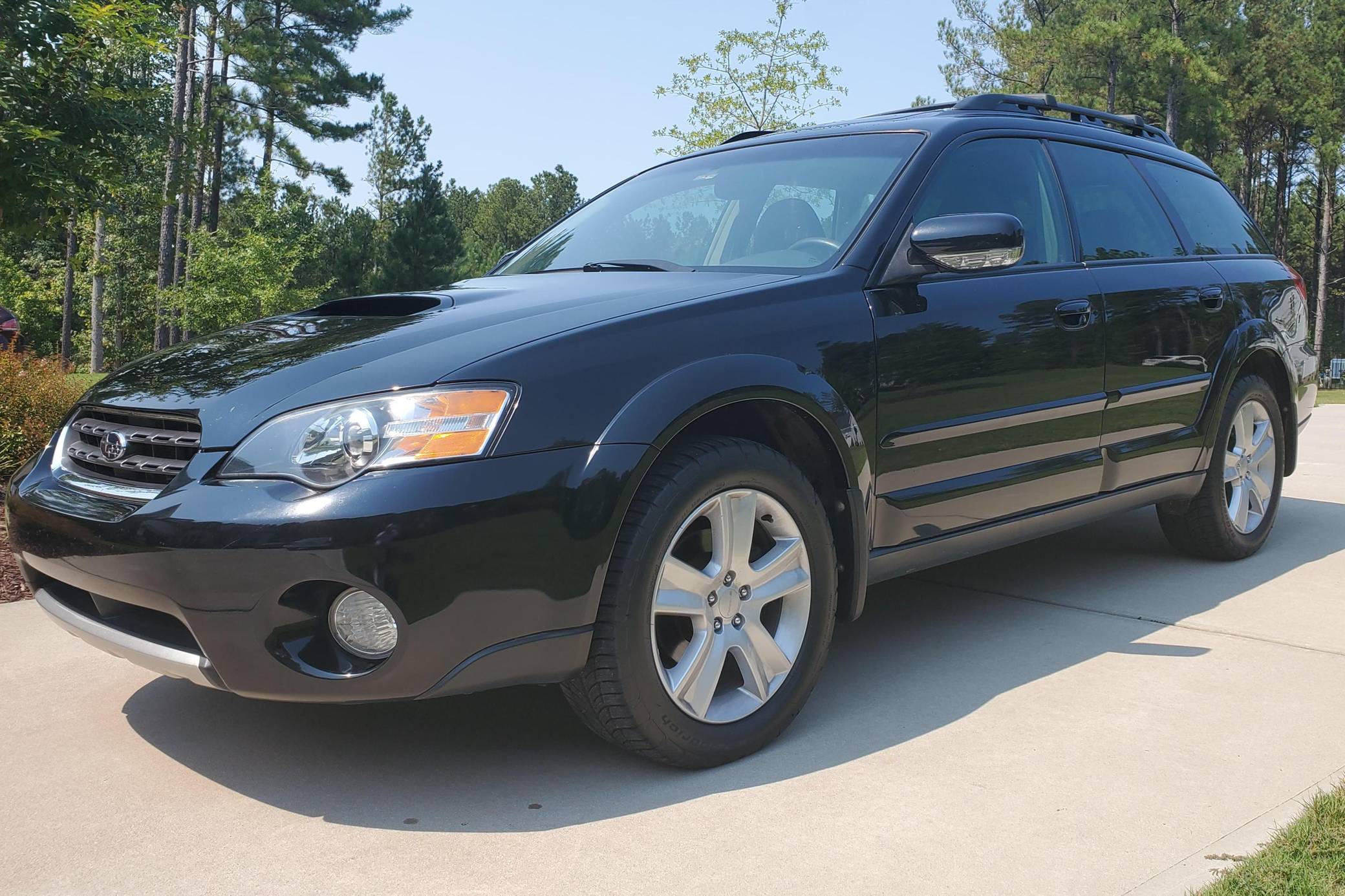
The Outback’s symmetrical all-wheel-drive system represents another area where Subaru’s engineering choices prioritize longevity over complexity.
Unlike the Haldex-based systems used in many Volkswagen and Audi products that frequently develop electronic control issues and mechanical binding by 100,000 miles, Subaru’s mechanical center differential design provides more consistent power distribution with significantly fewer potential failure points.
The system’s simplicity allows it to maintain proper functionality even after hundreds of thousands of miles continuing to provide sure-footed traction long after more complex systems in competitors have required expensive repairs or complete replacements.
Perhaps most impressive is the Outback’s structural durability and resistance to the elements. The vehicle’s unibody construction employs thicker gauge metals and more comprehensive rust protection than many competitors, allowing it to withstand years of exposure to road salt and harsh conditions without developing the structural integrity issues that plague many American alternatives.
Interior components demonstrate similar longevity seat frames resist breaking, control switches maintain consistent operation, and dashboard materials avoid cracking and warping that commonly affect German rivals like the Audi Allroad after years of sun exposure.
This comprehensive approach to building components that withstand both time and use explains why Outbacks remain popular in the used market even with high mileage buyers recognize these vehicles will likely provide many more years of service than comparably aged competitors.
8. Mazda Miata/MX-5
The Mazda Miata (MX-5) stands as extraordinary proof that Japanese sports cars can dramatically outlast their German and American rivals in both mechanical durability and resistance to structural deterioration.
While competitors like the BMW Z3/Z4 and Audi TT often require expensive major repairs by 100,000 miles, Miatas routinely exceed 200,000 miles with minimal issues all while continuing to deliver the engaging driving experience that made them legendary.
This remarkable longevity becomes even more impressive considering many Miatas are driven enthusiastically and subjected to the stresses of performance driving that would accelerate wear in less durable sports cars.
The foundation of the Miata’s exceptional lifespan begins with its brilliantly engineered engines. The B-series engines in early models and the more recent MZR and Skyactiv powerplants feature robust bottom ends, efficient cooling systems, and remarkably durable valve trains that maintain proper operation well beyond 200,000 miles.
Unlike the N52 and N54 engines in BMW’s Z-series that frequently develop expensive issues with valve cover gaskets, cooling systems, and fuel delivery components by 80,000 miles, Miata engines typically require only routine maintenance to continue performing flawlessly decade after decade.
Even more impressive is how these engines maintain their compression and power output over extreme mileage many 200,000+ mile examples still produce nearly factory-specified performance without internal rebuilds.

The Miata’s transmission and drivetrain components further highlight Mazda’s commitment to building sports cars that outlast the competition.
The five and six-speed manual transmissions are particularly noteworthy for their exceptional durability featuring precise shift mechanisms and synchromesh systems that maintain smooth operation far longer than those in Porsche Boxsters and Mercedes SLKs of comparable age, which often develop notchy shifting and synchronizer wear by 100,000 miles.
The differential units demonstrate similar longevity advantages, with proper fluid maintenance allowing them to function properly for the vehicle’s entire lifespan a stark contrast to the limited-slip differentials in many German sports cars that frequently require rebuilds or replacement as they age.
Perhaps most impressive is the Miata’s ability to resist the structural deterioration that plagues many convertible sports cars as they age.
While American alternatives like the Chevrolet Camaro convertible and Ford Mustang convertible often develop chassis flex and cowl shake as their structural components weaken over time, the Miata’s thoughtfully engineered chassis maintains its rigidity remarkably well.
The power top mechanisms demonstrate similar durability advantages continuing to function properly long after the complex roof systems in German convertibles have developed expensive hydraulic leaks or electrical failures.
This comprehensive approach to engineering longevity explains why even very high-mileage Miatas remain desirable in the enthusiast market, while equivalently-aged German alternatives often sell for a fraction of their original value due to reliability concerns.
9. Toyota 4Runner
The Toyota 4Runner represents perhaps the most dramatic example of Japanese SUVs outlasting their American and German counterparts in terms of both mechanical durability and structural longevity.
While vehicles like the Jeep Grand Cherokee and Ford Explorer often require significant drivetrain repairs by 150,000 miles, countless 4Runners continue functioning flawlessly beyond 300,000 miles with many examples surpassing 400,000 miles on their original engines and transmissions.
This extraordinary durability becomes even more impressive considering the demanding off-road use that many 4Runners endure throughout their extended lifespans.
At the heart of the 4Runner’s legendary reliability is Toyota’s commitment to building exceptionally robust engines optimized for longevity rather than pushing the boundaries of performance.
The 3.4L 5VZ-FE V6 found in fourth-generation models and the 4.0L 1GR-FE V6 powering fifth-generation versions feature overbuilt components designed to withstand decades of operation under challenging conditions.
These engines employ cast iron cylinder liners, forged internal components, and timing chains (rather than belts) that dramatically outlast the comparable powerplants in vehicles like the Mercedes-Benz ML-Class and BMW X5, which frequently develop expensive internal issues by 125,000 miles.
The 4Runner’s cooling systems deserve special mention designed with additional capacity and better flow characteristics that prevent the overheating issues common in American competitors during demanding conditions.
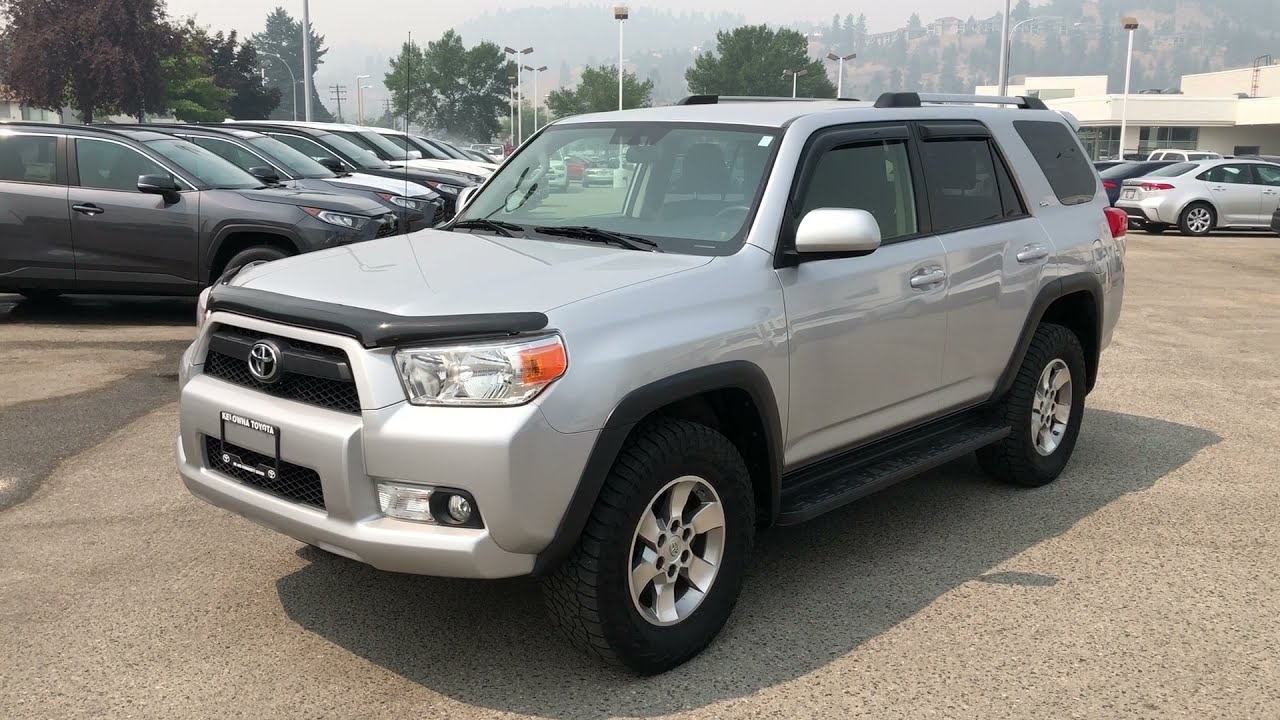
The 4Runner’s transmission and transfer case systems further demonstrate Toyota’s commitment to building components that outlast the competition. While the transmissions in vehicles like the Jeep Grand Cherokee often require rebuilds by 150,000 miles, the Aisin-Warner automatic transmissions in 4Runners regularly function properly beyond 250,000 miles with basic fluid maintenance.
The transfer cases are particularly noteworthy featuring thicker cases, larger bearings, and more robust shifting mechanisms than those found in Land Rover products, which frequently develop expensive drivetrain issues as mileage accumulates.
This drivetrain durability allows 4Runners to maintain their off-road capability even with extreme mileage, continuing to perform reliably in challenging terrain long after competitors would require major mechanical intervention.
Perhaps most impressive is the 4Runner’s ability to maintain its structural integrity and secondary systems over extraordinary distances. While German luxury SUVs frequently develop suspension failures, electronic module issues, and interior degradation as they age, 4Runners maintain their functionality with remarkable consistency.
The frame and body mounting points resist fatigue cracks that plague many body-on-frame competitors, while the electrical systems demonstrate exceptional reliability compared to European alternatives.
This comprehensive approach to engineering for longevity explains why 4Runners command extraordinary resale values even with high mileage buyers recognize these vehicles will continue providing reliable service long after comparably aged competitors have become financial liabilities requiring constant repair.
10. Lexus RX
The Lexus RX series has established itself as the definitive example of luxury crossovers that dramatically outlast their German and American competitors.
While vehicles like the BMW X5, Mercedes-Benz GLE, and Cadillac XT5 often develop significant mechanical and electrical issues by 100,000 miles, the Lexus RX routinely exceeds 250,000 miles with minimal major repairs all while maintaining its refined driving characteristics and comfort features.
This remarkable longevity stems from Toyota’s distinctive approach to luxury engineering that prioritizes long-term reliability alongside premium features, rather than sacrificing durability for the latest technological trends.
At the foundation of the RX’s extraordinary lifespan is its exceptionally engineered powertrain. The 3.5L 2GR-FE V6 engine that has powered multiple generations features precisely machined components, robust cooling systems, and conservative tuning that allows it to maintain proper operation far longer than the turbocharged engines found in German competitors.
While BMW’s N55 and Mercedes’ M276 engines frequently develop timing chain issues, oil consumption problems, and turbocharger failures by 100,000 miles, the naturally aspirated Lexus V6 typically continues running flawlessly well beyond 200,000 miles with basic maintenance.
The hybrid systems in RX450h models deserve special mention for their exceptional durability the high-voltage batteries, power inverters, and motor generators demonstrate remarkable longevity compared to hybrid systems from European manufacturers, often functioning properly for 15+ years without significant degradation.
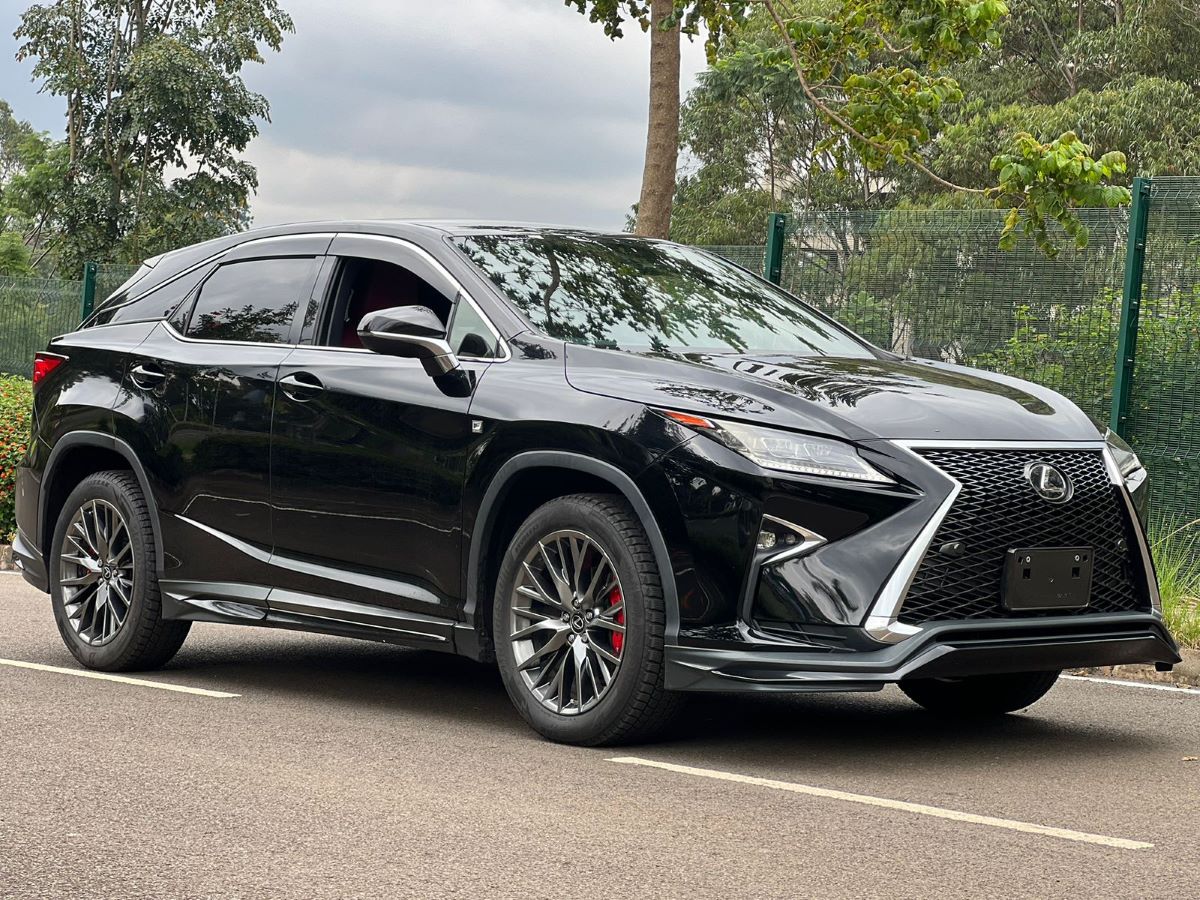
The RX’s transmission systems further highlight Toyota’s commitment to building components that outlast the competition. While the ZF transmissions in BMW X5 models and the 7G-Tronic units in Mercedes products frequently require rebuilds or replacement by 150,000 miles, the Aisin-Warner automatic transmissions in the RX series regularly function flawlessly beyond 200,000 miles with basic fluid maintenance.
This transmission durability stems from Toyota’s conservative engineering approach thoroughly testing components before implementation rather than rushing cutting-edge technology to market resulting in transmissions that avoid the electronic shift module failures and hydraulic control issues that plague German competitors as they age.
Perhaps most impressive is the RX’s ability to maintain its luxury features and comfort systems over extraordinary distances. While air suspension systems in the Audi Q7 typically fail multiple times during the vehicle’s lifespan, the RX’s conventional spring suspension maintains proper ride height and comfort characteristics indefinitely.
The leather interiors resist wear and cracking far better than those in Lincoln MKX/Nautilus models of comparable age, and dashboard electronics continue functioning properly long after German rivals develop intermittent failures.
This comprehensive approach to engineering durability alongside luxury explains why high-mileage RX models remain sought-after in the used market, while equivalently aged German luxury crossovers often sell for a fraction of their original value due to concerns about reliability and repair costs.

